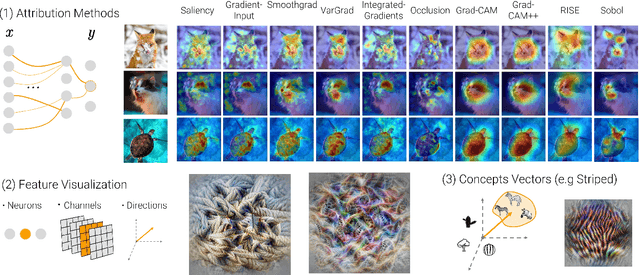Claire Nicodeme
Xplique: A Deep Learning Explainability Toolbox
Jun 09, 2022
Abstract:Today's most advanced machine-learning models are hardly scrutable. The key challenge for explainability methods is to help assisting researchers in opening up these black boxes, by revealing the strategy that led to a given decision, by characterizing their internal states or by studying the underlying data representation. To address this challenge, we have developed Xplique: a software library for explainability which includes representative explainability methods as well as associated evaluation metrics. It interfaces with one of the most popular learning libraries: Tensorflow as well as other libraries including PyTorch, scikit-learn and Theano. The code is licensed under the MIT license and is freely available at github.com/deel-ai/xplique.
Don't Lie to Me! Robust and Efficient Explainability with Verified Perturbation Analysis
Feb 15, 2022Abstract:A variety of methods have been proposed to try to explain how deep neural networks make their decisions. Key to those approaches is the need to sample the pixel space efficiently in order to derive importance maps. However, it has been shown that the sampling methods used to date introduce biases and other artifacts, leading to inaccurate estimates of the importance of individual pixels and severely limit the reliability of current explainability methods. Unfortunately, the alternative -- to exhaustively sample the image space is computationally prohibitive. In this paper, we introduce EVA (Explaining using Verified perturbation Analysis) -- the first explainability method guarantee to have an exhaustive exploration of a perturbation space. Specifically, we leverage the beneficial properties of verified perturbation analysis -- time efficiency, tractability and guaranteed complete coverage of a manifold -- to efficiently characterize the input variables that are most likely to drive the model decision. We evaluate the approach systematically and demonstrate state-of-the-art results on multiple benchmarks.
 Add to Chrome
Add to Chrome Add to Firefox
Add to Firefox Add to Edge
Add to Edge